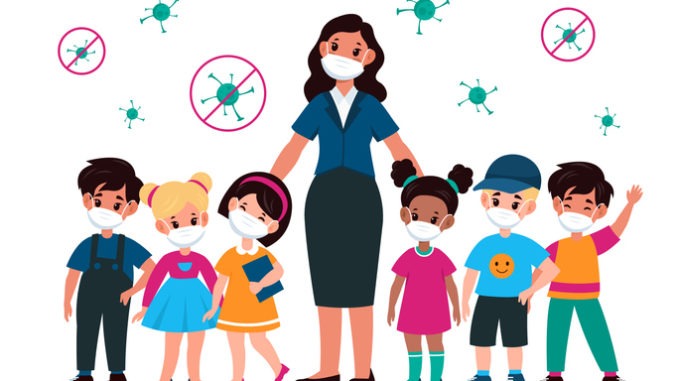
The government needs to be clear now – not at the last minute – about the likely COVID scenarios that schools in England will face in September, says Paul Whiteman, general secretary of the National Association of Head Teachers
This is an edited version of an article that originally appeared on The Guardian
It seems to have escaped government ministers’ notice, but running a school is a complex task. I say this because, over the last 18 months, schools in England have been dancing on the head of a pin, reacting to government guidance that has changed, and changed again, often overnight, with little regard for how it will be implemented in real life.
For all the difficulties that the pandemic has brought us, school leaders have told me that it is not COVID that has been their biggest headache, but the constantly changing expectations of the government.
The influential public accounts committee agrees. Last month it identified the Department for Education as a ‘department of concern’ because of its failure to learn the lessons of the pandemic in real time. Throughout the pandemic, the DfE has been playing catch-up; the individual efforts of schools have almost always been quicker and better than anything centrally managed from Whitehall.
We have recently seen the delay to the lifting of lockdown restrictions in England = but while the government deliberates over dates in July, school leaders have their eyes on September and beyond. The next academic year will bring new challenges, and the government needs to be clear now with schools about the likely scenarios they will face. If there is a possibility that safety restrictions may still be needed, then they need to say so, now; schools planning for September shouldn’t be expected to do so in the dark. School teams have proved that they are incredibly resourceful and adaptable – but the government can’t take this for granted.
The pandemic demanded that schools essentially reinvented the way education was delivered. In lockdown, this meant maintaining the quality and continuity of education, using a mixture of technology and good old-fashioned hard work, while juggling competing priorities like keeping some children fed, face-to-face care for those who are vulnerable or whose parents are key workers, and managing the school end of test and trace.
As restrictions eased, and more pupils were allowed back to face-to-face teaching, complex logistical arrangements had to be devised and tested in real time – school start and finish times and lunch breaks were staggered, and pupils were organised into bubbles to minimise the impact of positive cases of the virus.
Calm determination
With the same calm determination, school leaders’ thoughts are now on next year. In the absence of any kind of steer from government, they are anticipating multiple scenarios. In primary schools, for instance, the government appears intent on returning to the normal routine of statutory assessment; we believe this is a wrong-headed approach since ‘recovery’ for lost time will be the name of the game, and the regular rhythm of assessments won’t be relevant for some time.
For all schools, Ofsted is set to return to routine inspection. This is a mistake; there will be little that is ‘routine’ about next year. Inspection brings with it unnecessary fear and distraction, when what we need is a calm focus on recovery.
This is what educators are thinking about. They know what work needs to be done to help pupils. We polled NAHT members this week, and their top three recovery priorities were very revealing. Seventy per cent of them said small-group or one-to-one tuition was vital, although only 3% said using the government’s newly launched national tutoring programme was the best way to execute this. Forty-two per cent said that increasing pupil premium allocations would be welcome. The pupil premium is a well understood, well-used system of top-up funding for schools to help pupils from low-income households.
These two results tell me that schools would prefer to be allowed to employ their own expertise to determine what pupils need and be given funding directly from government to achieve this, rather than having to go through, potentially restrictive and bureaucratic, schemes mandated by Whitehall and untested at a national scale. I support school leaders in that assessment.
Sixty-three per cent of school leaders want better support for pupils’ mental health and wellbeing. Only two per cent thought that extending the school day – which the government is considering – was worthwhile. On these two important issues, schools and parents are totally on the same page; the government would do well to take note of this.
During the pandemic central government failed to provide schools with timely advice. Their current recovery plans look set to fall short of what young people will need because they are too modest in scope, and much too low in terms of funding, to be effective.
The government’s ‘catch-up plan’ needs to start with its own efforts.

Be the first to comment